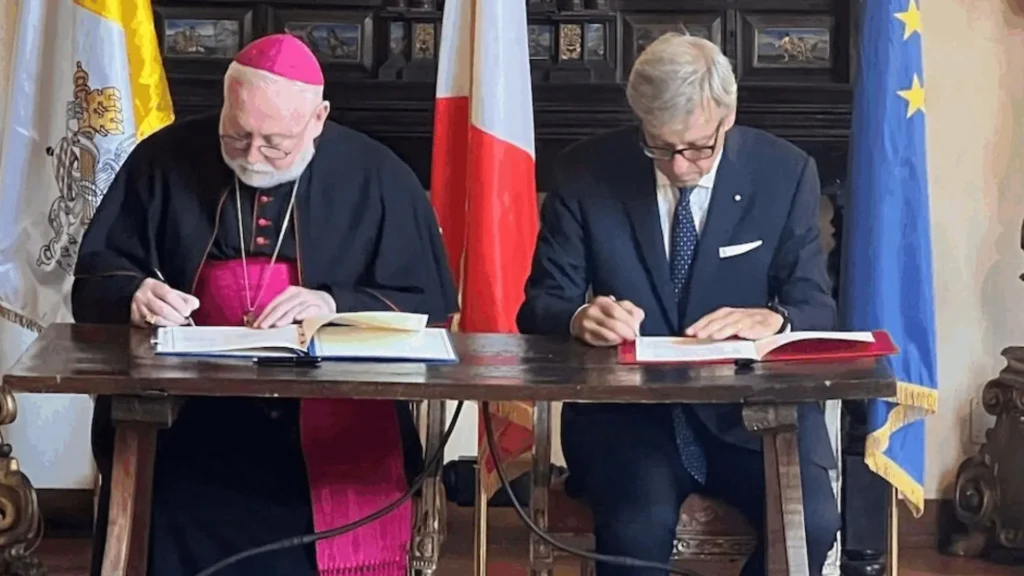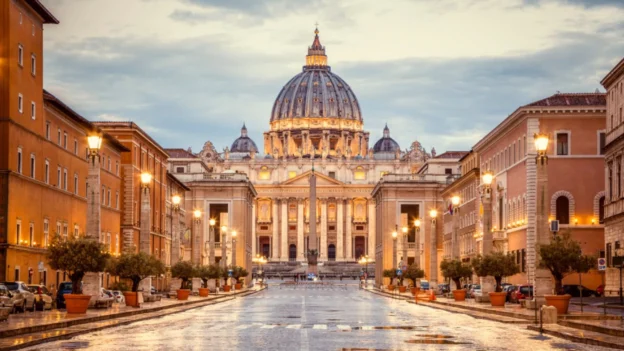The Holy See is moving towards its goal of becoming the world’s first carbon-neutral state thanks to a pact with the Italian government. The two parties signed an agreement at Palazzo Borromeo that will allow the construction of an agrovoltaic plant on Vatican land located in Santa Maria di Galeria, north of Rome.
The agreement was signed on July 31, 2025 by Archbishop Paul Richard Gallagher, the Vatican’s head of State Relations, and Francesco Di Nitto, the Italian ambassador to the Holy See. The project represents a concrete step in the small state’s decarbonization strategy.

An agrovoltaic plant with a sustainable approach
The photovoltaic installation will be located on a 430-hectare site that previously housed radio transmission antennas. With this conversion, priority will be given to respecting agricultural land use, protecting the natural environment and generating clean energy. clean energy to supply the Vatican’s electricity consumption.
Italy, in addition to supporting the offshore use of the land, will be able to count the energy production towards its environmental commitments to the European Union. Surplus electricity generated may be allocated to the local community, as established by the agreement.
The agreement, which includes five articles, is in line with the principles of the Paris Agreement on Climate Change and demonstrates the Vatican’s intention to align itself with international standards in terms of sustainability.
The agrovoltaic plant will mark a starting point for the simultaneous use of solar energy and agricultural activities.
Santa María de Galeria, once the scene of controversy due to the emission of electromagnetic waves, will now give way to an infrastructure that seeks to reduce its environmental impact. The site will leave behind its past as a broadcasting center to become a model of integration between solar technology and landscape preservation.
Source: official website of the Holy See
Main photo: shutterstock
Internal photo: Vatican City State

